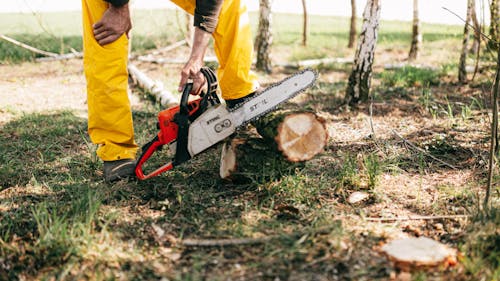
When considering tree removal service cost, several factors come into play, influencing the final price you’ll pay. From the size and condition of the tree to the location and accessibility of your property, understanding these variables can help you anticipate expenses and make informed decisions. Below, we delve into the key factors affecting tree removal service cost to help you budget effectively.
1. Tree Size and Complexity
The size and complexity of the tree greatly impact the cost of removal. Larger trees with extensive branches or multiple trunks require more time and effort to remove safely. Additionally, factors such as the tree’s health, condition, and proximity to structures or power lines can increase complexity and, consequently, the overall cost of removal.
2. Tree Species
Different tree species pose varying levels of difficulty during removal. Some species, such as pine or oak, may have deeper root systems or denser wood, requiring specialized equipment or techniques for extraction. Additionally, certain species may be protected by local regulations, requiring permits or additional fees for removal.
3. Accessibility
The accessibility of your property plays a significant role in determining tree removal costs. Trees located in hard-to-reach areas, such as tight spaces between buildings or fenced yards, may require extra labor or equipment to extract safely. Limited access can also impact the transportation of equipment and debris removal, adding to overall expenses.
4. Tree Condition and Health
The condition and health of the tree affect both the ease of removal and the associated costs. Diseased or decaying trees pose increased safety risks and may require additional precautions or specialized equipment for removal. Similarly, trees with extensive damage from storms or pests may necessitate more extensive removal procedures, driving up costs.
5. Additional Services
Beyond basic tree removal, additional services can impact overall costs. For instance, stump grinding or removal, limb chipping, and debris cleanup may incur extra charges. It’s essential to discuss your specific needs with the tree removal service provider to obtain accurate cost estimates for all required services.
6. Geographic Location
Geographic location can influence tree removal service costs due to variations in labor rates, equipment availability, and local regulations. Urban areas with higher living costs may have higher service fees compared to rural or suburban areas. Additionally, regions prone to inclement weather or natural disasters may experience fluctuations in pricing based on demand and resource availability.
7. Seasonal Factors
Seasonal factors can also impact tree removal costs. Demand for tree services may fluctuate throughout the year, with peak seasons typically coinciding with periods of favorable weather or specific tree maintenance needs, such as storm damage cleanup. Planning your tree removal during off-peak seasons may result in lower service costs and greater availability from providers.
Choosing a Reliable Tree Removal Service
When selecting a tree removal service, it’s crucial to prioritize quality, safety, and professionalism over cost alone. Here are essential considerations to help you choose a reliable provider:
1. Credentials and Insurance: Ensure the tree removal service is licensed, bonded, and insured to protect yourself and your property against liability in case of accidents or damages during the removal process.
2. Experience and Expertise: Look for a company with extensive experience and a proven track record in tree removal. Experienced professionals are better equipped to handle complex removals safely and efficiently.
3. Equipment and Techniques: Inquire about the equipment and techniques the company uses for tree removal. Modern equipment and industry-standard practices contribute to safer and more effective removals with minimal disruption to your property.
4. References and Reviews: Seek recommendations from friends, neighbors, or online reviews to gauge the reputation and reliability of the tree removal service. Positive testimonials and satisfied customers are indicators of quality service.
5. Cost Transparency: Request detailed cost estimates from multiple providers, ensuring transparency regarding pricing and any additional fees for services beyond basic removal. Compare quotes to find a balance between affordability and quality.
Conclusion
While tree removal service costs can vary widely based on several factors, understanding the key considerations outlined above can help you budget effectively and select a reputable provider for your tree removal needs. By prioritizing safety, professionalism, and quality service, you can ensure a smooth and efficient removal process while preserving the health and aesthetics of your property.




